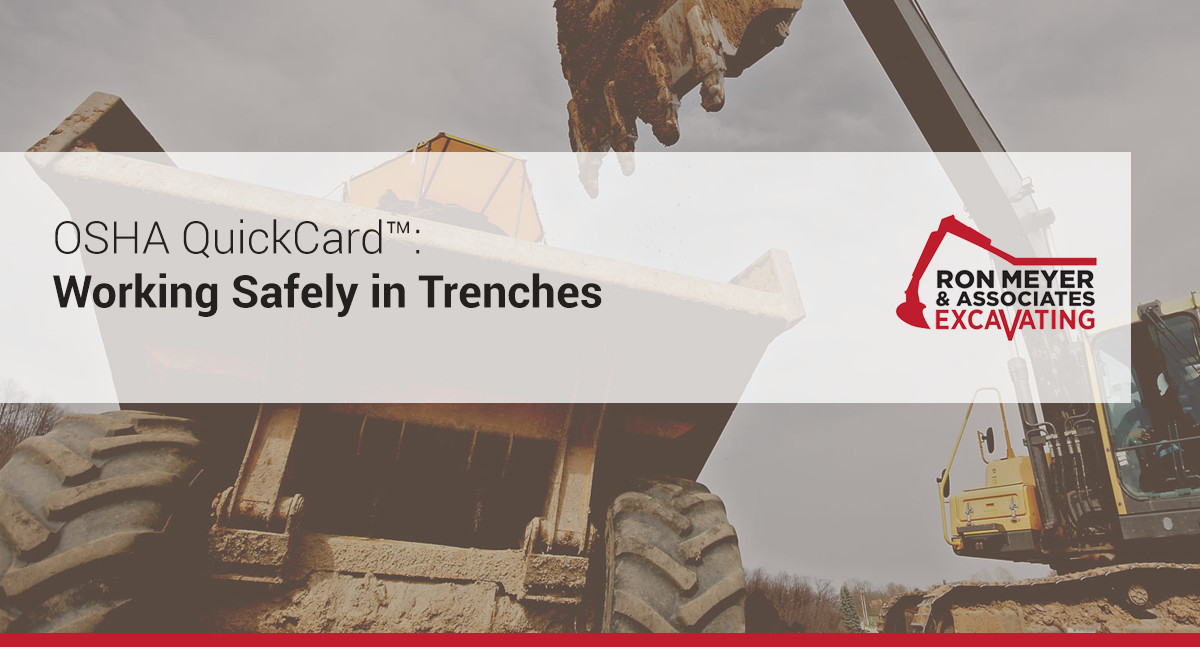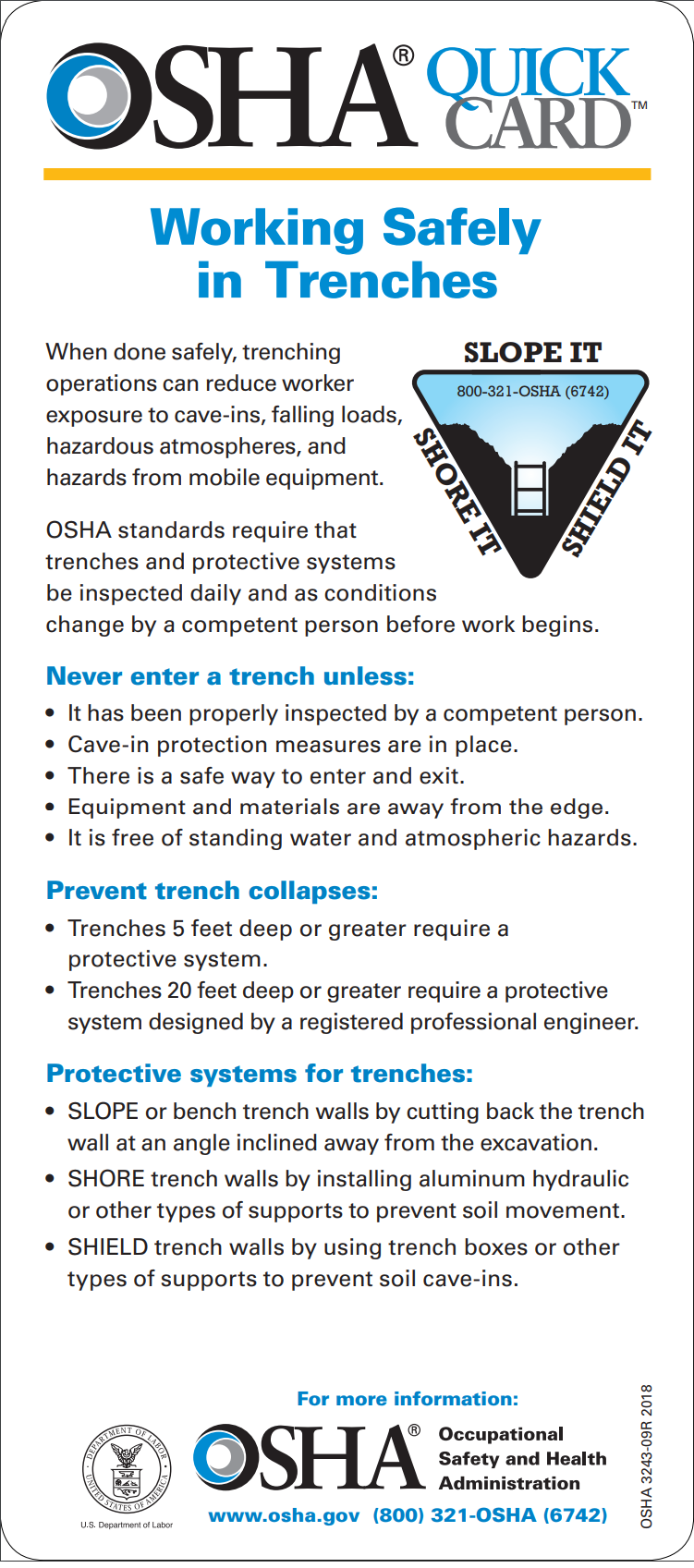
Working Safely in Trenches
When done safely, trenching operations can reduce worker exposure to cave-ins, falling loads, hazardous atmospheres, and hazards from mobile equipment.
OSHA standards require that trenches and protective systems be inspected daily and as conditions change by a competent person before work begins.
Never enter a trench unless:
- It has been properly inspected by a competent person.
- Cave-in protection measures are in place.
- There is a safe way to enter and exit.
- Equipment and materials are away from the edge.
- It is free of standing water and atmospheric hazards.
Prevent trench collapses:
- Trenches 5 feet deep or greater require a protective system.
- Trenches 20 feet deep or greater require a protective system designed by a registered professional engineer.
Protective systems for trenches:
- SLOPE or bench trench walls by cutting back the trench wall at an angle inclined away from the excavation.
- SHORE trench walls by installing aluminum hydraulic or other types of supports to prevent soil movement.
- SHIELD trench walls by using trench boxes or other
types of supports to prevent soil cave-ins.
Download the OSHA QuickCard™: Working Safely in Trenches (shown below)

At Ron Meyer & Associate Excavating, Inc, we’ve been providing underground and commercial construction to private and commercial businesses for 39 years. As the general contractor or subcontractor, our experienced foremen, equipment operators, pipe layers, truck drivers and well-maintained equipment fleet make us an undeniable choice for your excavating services. Let’s talk about your project!
Sources:
- https://www.osha.gov/Publications/trench/trench_safety_tips_card.pdf

As 45 years of experience as an underground/site contactor and a third generation contractor, Ron takes time to go through each individual project with the supervisor and is responsible for all scheduling and equipment logistics. He’s also involved in all troubleshooting for projects.